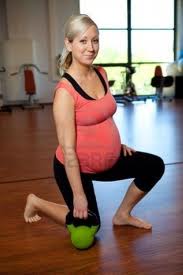Call or Text 408-887-7107 to make an Appointment
Pregnancy massages are meant to promote relaxation, the relief of a strained back, and the soothing of nerves. The second and the third trimesters of pregnancy are when a pregnancy massage is most beneficial to a woman, because those trimesters are when the additional weight in a woman’s belly puts more strain and pressure on her back. There are a few places where women can find and get a pregnancy massage, those being spas and hospitals. However, before a treating yourself to a pregnancy massage, please be sure that the massage therapist to whom she is going has been specially trained to avoid any risks of miscarriage. Massage is not recommended in the 1st trimester, nor in the 3rd trimester if the client is at risk for miscarriage
> Prenatal Massage
We tailor prenatal massage to the expectant mother’s demands. Prenatal massage is different from a regular massage because it demands that a new mother’s body has to be positioned as well as supported in the right way; this is achieved by utilizing pillows and some padding. Padding and the right pillows ensure that both the mother as well as the baby are comfortable. Further, certain massage techniques like deep tissue massage are forbidden for use on expectant mothers, and specific areas of the mother’s body ought to be avoided as well.
Some women experience great relief from pain and distress during pregnancy. Often women have found that it relieves stress, takes away aches that are in the joints and the muscles, and lessens swellings in one’s arms and the legs. When options for relief during pregnancy are limited, prenatal massage fills the void effectively, and it also is a widely used, complementary therapy to treat back pain. Therapy of this sort has also been found to reduce anxiety and stress in pregnant women.
Possible Benefits of Pregnancy Massage
Only a handful of small studies have focused on massage in pregnancy. No definite benefits have been established. But one study at the University of Miami School of Medicine suggests that massage might have multiple positive effects, including:
Lowered anxiety
Decreased back and leg pain
Improved sleep
Decreased levels of the stress hormone norepinephrine
In another study of pregnancy massage in depressed women, researchers found:
Increased levels of the "feel-good" hormones serotonin and dopamine
Decreased levels of cortisol, an indicator of stress
An overall improvement in mood
Research has shown that, for the general population, massage has other potential benefits. It may relieve pain, or it may boost the immune system’s ability to fight off viruses and tumors.
Safe techniques for pre-natal massage
There are more than 80 types of massage taught in roughly 1,300 massage therapy programs in the U.S. Examples of common types of massage include:
Deep-tissue massage, with firm strokes pressing deep into muscles
Swedish massage, with long strokes to muscles and attention to joint mobility
Shiatsu, with pressure and tapping on acupressure points to stimulate the body's natural energy (called qi)
Many clients have found that pre-natal massage
Relieves pain
Stimulates the release of certain hormones like serotonin
Improves sleep
Promotes the physiological response of relaxation
We adapt our techniques to address the changes a woman's body goes through during pregnancy. For instance, blood volume increases dramatically -- as much as 50% -- during pregnancy. Blood flow to the legs often becomes sluggish. And the levels of anticoagulants in the blood -- designed to prevent hemorrhaging during delivery -- naturally rise.
These circulatory changes put a pregnant woman at risk of blood clots in the lower legs, typically in the calves or inner thigh. To be safe, pregnancy massage experts avoid deep massage and strong pressure on the legs. Using strong pressure could dislodge a blood clot. Instead, they use very light, slow strokes on the legs. Types of massage we avoid on the legs include deep-tissue massage, deep acupressure, shiatsu, cross-fiber friction, and percussive tapping. All leg massage strokes should move toward the heart
Very light pressure on the abdomen is advised, if the belly is massaged at all. We typically avoid massaging the abdomen.







